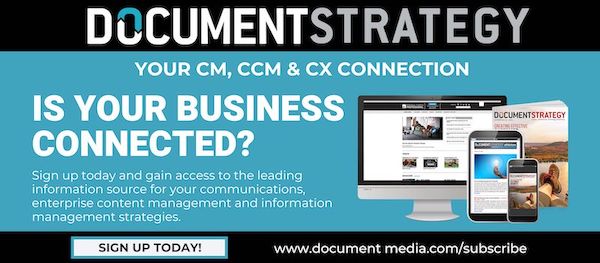
In a previous article, I made the case for changing how we create and manage customer communications. It is impossible to witness the changes in business over the past few years without recognizing the need for a communications strategy that reaches beyond the document-centric one we know. I think it is safe to say that the construct of the document has dominated our approach to managing customer communications and has been primarily dictated by word processing applications and complete file storage and structures built on paths that have been standard for decades. The changes businesses needed to make quite hastily at the onset of the pandemic proved that while communication is paramount, it is even more important to serve up communications and information (in our vernacular content) in ways that consumers demand them.
Here is the critical part that we all have to start paying attention to: The new consumer is focused on posts and hashtags. They communicate in 280 characters. They use emojis to express thoughts. They are used to signing contracts, paying bills and buying groceries on a mobile device. This demographic looks at the world from more of a mind map point of view and less of a file folder structure. Separating content from the wrapper opens possibilities for better constructed campaigns and personalized experiences based on end-user behavior and selections. With these changing ways of interacting — and the understanding that how we deliver content needs to evolve in tandem — it is time to smash the document paradigm and create communications and experiences that resonate with this burgeoning wave of new consumers.
A place to start is first to understand two key concepts regarding content before diving into a proposed alternative on how we can more effectively manage our communications today. Two primary methods of treating content have emerged from those heavily involved in content marketing. The first is Create Once, Publish Everywhere (COPE). COPE is an established strategy for content creation and distribution. It means reusing the same content on all marketing channels to drive efficiency in creation and consistency in messaging. Applied to customer communications, think about leveraging COPE to repurpose a piece of componentized content. Think of a logo, a URL, a regulatory disclosure, an offer, a product description, etc. and how many templates where that exact piece of content is found across your communications, across channels. Applying this concept enables you to create a single content component, centrally manage it and share it out to all the places it needs to exist. When you need to make an edit to that single component or object, you make the edit once and the change is reflected everywhere that component is stored.
The second concept, Create Once, Repurpose Everywhere (CORE), is the notion of having to adapt content to various channels and uses. It’s not as powerful as COPE from an efficiency perspective, but it enables the tailoring of content to the situation, driving relevancy and personalization in your content. For example, you might need to change a regulatory disclosure by state or modify it to a short form for a digital touchpoint. Applying CORE, you create renditions of what is largely the same piece of content, but with some variation to accommodate those differences — whether they are regional, language, product, etc. This is important because it still allows you to centrally manage content, but it also associates related content, so you can better manage it. Intelligently applying technology to these variations can also help further streamline the content to blend COPE and CORE to really change how you approach content management.
Both of these concepts help content creators streamline content management processes to save time and, in some cases, gain greater control over compliance. It also helps to drive consistency across channels and touchpoints. Like content marketers, document professionals use COPE and CORE in some fashion today, but the challenge lies in the lack of management constructs to enable the content to be efficiently managed, updated and leveraged. We all know successful communications need to convey a consistent message that can be pushed through multiple platforms (mobile apps, SMS, email, web and print). The typical method of using spreadsheets and Word® documents to author the content and then have it deployed in a variety of templates across various disconnected delivery systems doesn’t work. The modular approach, with body copy, header, contact info, image, messages and regulatory disclosures as separate elements, gives business users the ability to access these assets centrally, yet still control the actual message they want deployed into various communications and channels. Breaking down current communications into their own elements, separating content from the presentation medium, increases relevancy and personalization. Utilizing a central content hub makes it easier to adjust messaging to the appropriate audience and publish it.
Additionally, this new view of managing content lends itself to dynamic communications that are relevant to your audience and on brand — something that has never been more important in your efforts to reach a growing customer base with a short attention span. A modularized content management approach also makes it possible to enhance collaboration between servicing and communications teams to send consistent, relevant and timely communications.
Communication channels have never been more diverse than they are in today’s digital world. It is time to stop looking at the world of customer communications through an individual document lens and start focusing on the content that needs to be sent. Moving from a traditional template mindset in CCM is a challenge, but it is a leap worth making to create truly dynamic communications that engage customers. The impact of a modularized content management approach to a customer communications strategy is a significant game changer for any company willing to invest the time and think outside the template to the future.





















